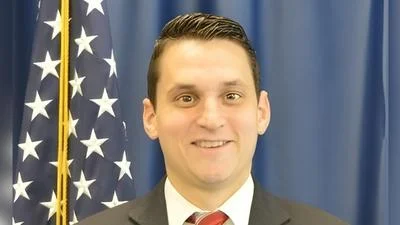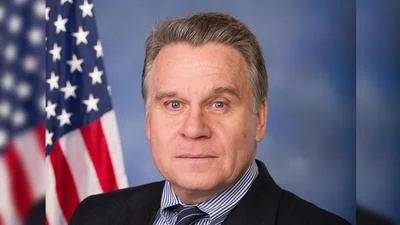The Congressional Record is a unique source of public documentation. It started in 1873, documenting nearly all the major and minor policies being discussed and debated.
“U.S. MUST LEAD GLOBAL RESPONSE TO FAMINE IN HORN OF AFRICA” mentioning the U.S. Dept of State was published in the House of Representatives section on pages H5665-H5666 on July 28, 2011.
The publication is reproduced in full below:
U.S. MUST LEAD GLOBAL RESPONSE TO FAMINE IN HORN OF AFRICA
The SPEAKER pro tempore. The Chair recognizes the gentleman from Massachusetts (Mr. McGovern) for 5 minutes.
Mr. McGOVERN. Mr. Speaker, last week, the United Nations declared famine in Somalia and reported urgent needs in Ethiopia and Kenya. On our nightly TV news and in our daily papers, we are seeing the pictures of people dying, of children suffering from extreme malnutrition, and of mothers carrying their babies, walking over 100 miles in search of food and safe haven.
Tens of thousands of people in Somalia have already died. The Horn of Africa is suffering a devastating drought, with this year being recorded in some locations as the driest or second driest year on record since 1951. The impact has been compounded by war, neglect and spiraling food prices.
Currently, some 11.5 million people across east Africa urgently need food aid, medical supplies and care. More than 130,000 Somali refugees have left their country for refugee camps along the borders of Ethiopia and Kenya. They arrive exhausted and physically depleted. News reports estimate that about 1,300 Somali refugees arrive in northern Kenya every single day. They join already overcrowded camps, and stress the ability of the Kenyan Government and humanitarian agencies to provide food, water, emergency care, and shelter.
Working with local partners and NGOs such as Doctors without Borders, Save the Children, and Italian Aid, UNICEF will be vaccinating hundreds of thousands of children. Dehydrated and suffering from malnutrition, these children, especially those under the age of 5, are particularly susceptible to the measles, polio, diarrhea, and pneumonia.
To date, in fiscal year 2011, the United States has provided over
$450 million in humanitarian aid to the Horn of Africa through USAID's Office of Foreign Disaster Assistance and the Food for Peace program, along with refugee assistance from the State Department's Bureau of Population, Refugees, and Migration.
But much more needs to be done. The next 3 to 6 months will be critical. The drought is expected to worsen, at least through the end of the year, and then we will wait to see what happens during the next cycle of rains. Will communities be able to recover? Will small farmers be able to plant new crops or will heavy rains produce floods that drive communities deeper into poverty?
My colleagues need to understand, however, that the current crisis, as terrible as it is, could have been much worse. There is good news amongst so much tragedy. The last time a drought of this magnitude hit Ethiopia, over 14 million people faced starvation. This time, about 4.5 million Ethiopians are in need of emergency aid. The difference? Since 2005, the United States and other donors have made significant investments in Ethiopia's Productive Safety Net Program.
I saw firsthand several of these programs in 2007. They helped small farmers and poor communities diversify the crops they planted, broaden their sources of income, create local markets, better manage their water resources, and increase the nutritional content of their own diets and those of their children. This has enabled over 7.5 million Ethiopians to withstand the worst effects of the current drought. These families and communities are not part of the 4.5 million Ethiopians who require urgent humanitarian aid.
Mr. Speaker, these programs work. They were models for Feed the Future, our current global program to promote sustainable agriculture, food security and nutrition. It's how you end global hunger, Mr. Speaker. It's the difference between needing to help rescue 4 million people rather than 14 million people. It's also the difference between investing $6 per person each year so they become more food secure and resilient to disasters--or having to invest $250 per person to deliver emergency relief that only covers 3 to 4 months.
It's the smart way to invest our development resources. Mr. Speaker, this is why I am so appalled by what happened yesterday in the markup of the State-Foreign Operations appropriations bill.
{time} 1020
Development, humanitarian, and disaster aid programs were all brutally cut. These cuts come on top of the Agricultural appropriations bill that devastated our emergency food aid programs.
With the worst drought in 60 years hitting the Horn of Africa, these cuts amount to the United States turning its back on its own strategic interests and walking away from our international commitments.
Instead, we need to increase our emergency response to the current crisis, ensure that we have the resources to invest in long-term development, and continue our global leadership in ending hunger and famine once and for all. We need to do better, Mr. Speaker.
Analysis: Horn of Africa Aid Must Also Build Long-Term Resilience
Geneva.--The images of starving children bear grim witness to the extent of the crisis affecting millions of people in the Horn of Africa, but they also symbolize a failure to act in time, say aid experts.
``It is a colossal outrage that the warnings went unheeded, that the lessons of previous famines have been ignored,'' says Barbara Stocking, chief executive of Oxfam.
The crisis in the Horn of Africa, triggered by drought, conflict and high food prices, is affecting at least 11.6 million people, with two regions of southern Somalia suffering from famine. And the situation may well deteriorate.
But the crisis, experts say, could have been mitigated by mobilizing the necessary resources ahead of time. There is increasing evidence that helping people become more resilient to the naturally recurring cycles of drought is far more effective than responding after disaster has struck.
It is also sound use of donor money, they say. As such, helping farmers find alternative livelihood options, or teaching them to grow drought-resistant crops, is far more effective than providing food aid when the harvest has failed.
``We have hard evidence, including from Africa, that we need only five Swiss francs [US$6.20] per capita per annum to build up resilience,'' said Mohammed Mukhier, who heads the Disaster Risk Reduction unit at the International Federation of Red Cross and Red Crescent Societies (IFRC).
``If you take the emergency response and emergency operations, you might need 200 francs [$250] per capita to deliver relief assistance for periods of just three or four months.''
Humanitarian agencies and donors agreed at an emergency meeting in Rome on 25 July that the response to the crisis must address the immediate needs of the desperate population and help build resilience to avert similar crises in the future.
Risk reduction
Using donor money wisely is particularly urgent in view of the threats posed globally by natural disasters, including increasingly frequent storms, floods and droughts. Advocates of the risk reduction strategy argue that donors can no longer afford to provide funding for disasters primarily after the fact. The cost is rising and compromising regular development investment.
Yet, warnings of impending disaster in the Horn of Africa went largely unheeded.
``Measures that could have kept animals alive--and provided milk, and income to buy food--would have been much cheaper than feeding malnourished children, but the time for those passed with very little investment,'' said Simon Levine, of the Overseas Development Institute. Now, ``it is far too late to address anything but the worst symptoms'', he wrote on the website of the independent British think-tank.
While massive funding often goes to post-disaster response, funds for preparedness and contingency planning are relatively scarce. Risk prevention is often hard to fund as it does not generate the same kind of media as a high-profile emergency response. Government donors answer to taxpayers and need to demonstrate impact--something that is difficult to do when disaster has been averted.
With donors mobilized--even if funds pledged still fall well short of the US$2 billion needed--the focus in the Horn of Africa is now on emergency as well as long-term assistance.
``Short-term relief must be linked to building long-term sustainability,'' said UN Secretary-General Ban Ki-moon.
``This means an agricultural transformation that improves the resilience of rural livelihoods and minimizes the scale of any future crisis. It means climate-smart crop production, livestock rearing, fish farming and forest maintenance practices that enable all people to have year-round access to the nutrition they need.''
Kanayo F. Nwanze, president of the International Fund for Agricultural Development (IFAD), stressed that building resilience in farming and herding communities required a long-term commitment. ``But time--as we can see from the devastating situation in the Horn of Africa--is running out,'' he told delegates at the meeting in Rome.
The challenge of seeking to avoid future food insecurity crises in the Horn of Africa is daunting. Conflict has severely hampered development and relief efforts in Somalia, and affects the mobility of pastoralists and their livestock, which is key to food security in the region.
But disaster risk reduction is increasingly seen as a humanitarian imperative, crucial to battling poverty and achieving sustainable development.
``Building resilience of farming and herding communities in East Africa requires a long-term, sustained commitment on the part of the region's governments and the international donor community,'' said Kevin Cleaver, IFAD's associate vice-president.
``The rains will fail. But let us not fail, too.''
____________________








